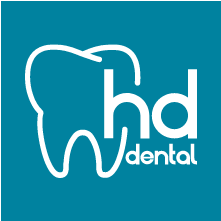Crowns
A crown fits over the remaining part of the prepared tooth covering it and thus improving both its strength and appearance. To make a crown one needs 2-3 appointments, depending on the complexity of the case.
In today’s dentistry, the most often used types of crowns are the following:
- Porcelain-fused-to-metal (PFM) crowns are considered the standard solution because of their satisfactory durability and aesthetics. Their acceptable price makes them an optimal choice in most cases.
- All-porcelain crowns present the best aesthetic results in the front region. Their optical characteristics are very close to those of natural teeth. Not even a dentist can distinguish them at first sight.
- Zirconia crowns are a relatively new invention in modern dentistry and are very popular for a reason: They contain no metal and are very durable and have excellent aesthetics.
- Procera crowns are made by a revolutionary new process. Because of their exceptionally high precision fit they are superior to all other crowns. Another advantage is that their superior quality is not overly reflected in their price.
- Veneers belong to a special class of crowns. You can learn more about them in the section Aesthetic dentistry.
Bridges
The pieces of the bridge replace the missing teeth while the anchoring crowns join the entire structure permanently on the adjacent teeth. Fixed bridges are not only more comfortable to wear than removable dentures, they also last longer – with the right oral hygiene – and are preferred to removable dentures because of their durablity. Average time span of fabrication: 3 visits within 7-9 work days.
Typical kinds of bridges:
- Porcelain-fused-to-metal (PFM) bridges consist of a metal framework that provides the needed stability and a porcelain coating that gives the bridge its tooth-like appearance.
- Zirconia bridges are metal-free. They contain a tooth-colored framework made of zirconia, an extremely hard type of ceramic, and the usual porcelain coating. They not only look better than regular PFM bridges, they also last longer.
- Procera bridges can be – because of the new Procera technique – made out of any material of choice without limitation on their extent. Thus, they offer the freedom to choose the best suitable combination and the highest available quality at the same time.
- Inlay bridges only differ from others in that they are anchored to the adjacent teeth with inlays instead of anchor crowns which makes it possible to save considerably more of the healthy tooth.
- Telescopic bridges combine the advantages of fixed bridges and removable dentures.
Partial dentures
Whenever too many teeth or the strongest teeth are missing, partial denture can be used to fill the gap to the remaining teeth. To prevent further bone loss the remaining teeth have to bare the weight.
Partial dentures are complicated devices. Their fabrication takes 4-5 visits within at least 10 work days. The numerous variations differ from each other in the way they are attached to the teeth:
- Dentures with clasps could loosen the anchoring teeth and cause alveolar bone loss. Their appearance is not too attractive either. That’s why they are only recommended as temporary dentures.
- Cast metal base dentures are more stable and less harmful than the above but still not the ideal dental restoration.
- Combined dentures consist of a fixed part, usually a bridge, and a removable part. The attachment elements can be of several different types, though they all have one thing in common: the pressure of chewing is – at least partially – put onto the remaining teeth.
- Telescopic dentures are commonly used when the remaining teeth are either too few or too loose. Should any of them be lost any time later the denture can easily be adjusted to the new situation which is an invaluable advantage.
- Telescopic bridges are a similar construction except that the visible frontal part (or sometimes the whole denture) is reduced and designed as a bridge in order to make it more aesthetic and comfortable.
Full dentures
When every tooth is missing a removable full denture is the standard treatment. In such a case other parts of the mouth must help to hold the denture in place. Sometimes using implants can produce remarkable results.
- Conventional full dentures only sit on the gum and the surrounding soft and loose mucosa. Because of that, their stability is not particularly good, especially in the lower jaw.
- Implant supported dentures are the best solution in those cases. Even in old age and with receded jaw bone there is almost always enough bone substance to hold 4 implants, which can be the base for stable dentures.
media

 AT: +43 676 933 3778
AT: +43 676 933 3778

